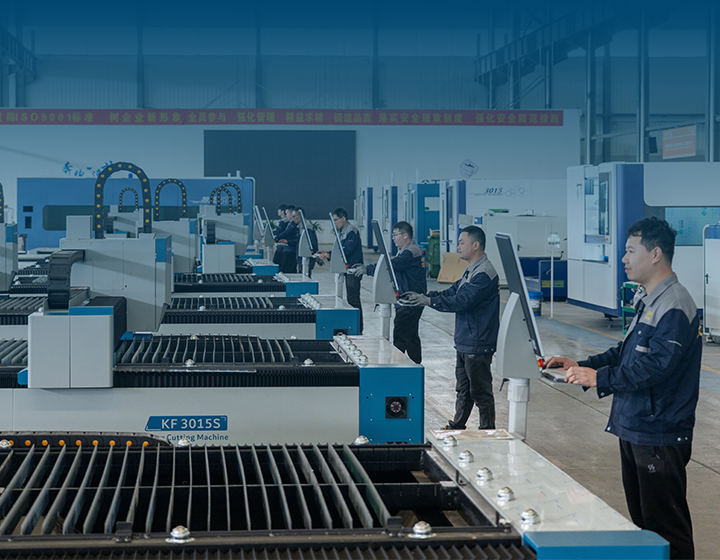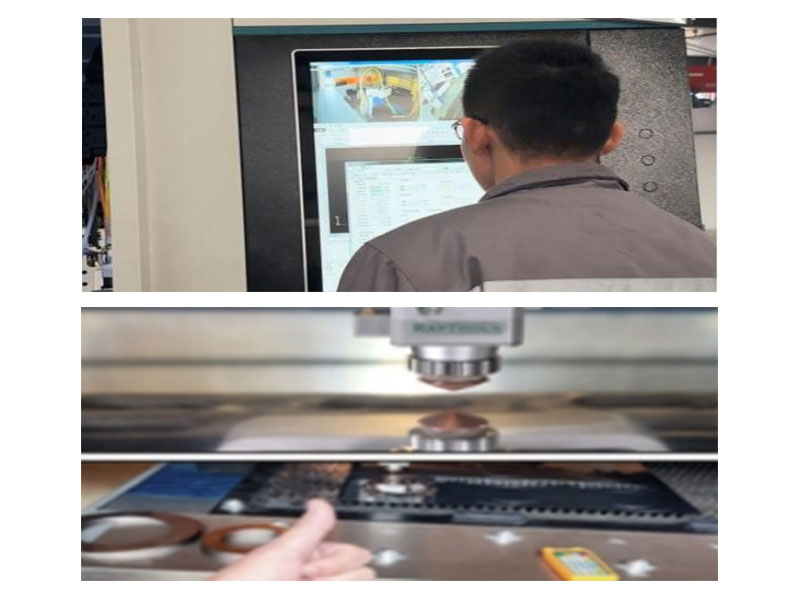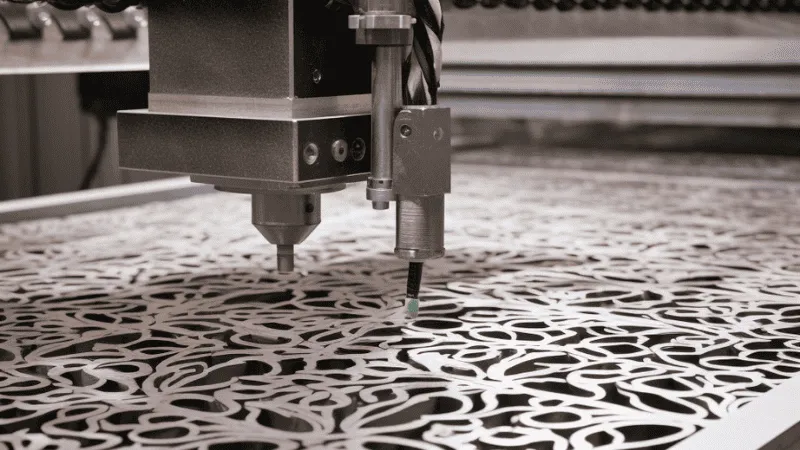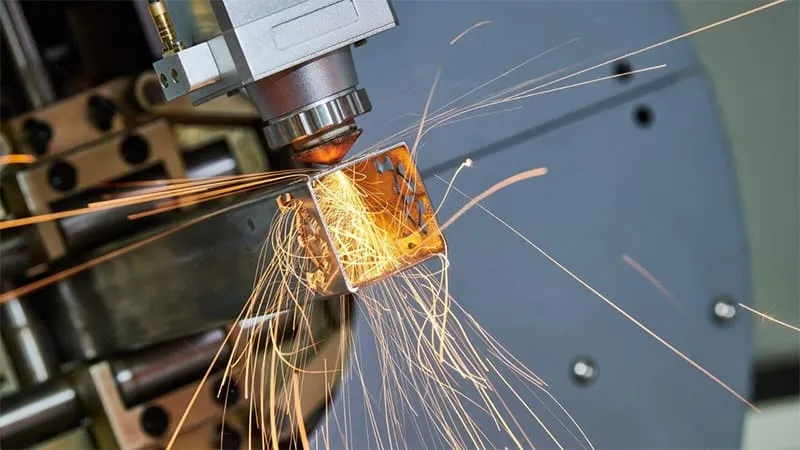Notícias
4kw de espessura de corte a laser | Capacidade máxima de material
4kw laser cutting thickness is not just a number—it’s the threshold where precision meets power, where industrial dreams transition from blueprints to tangible reality. Imagine a tool so precise it can slice through steel like a hot knife through butter, yet so nuanced that a fraction of a millimeter in thickness can mean the difference between a flawless cut and a costly mistake. Para fabricantes, fabricators, and engineers, understanding this metric isn’t optional; it’s the backbone of productivity, profitability, and innovation. In a world where competition is fierce and margins are tight, knowing exactly what a 4kW laser cutter can handle isn’t just about “getting the job done”—it’s about redefining what’s possible.
The Science Behind 4kW Laser Cutting Thickness: Poder, Wavelength, and Material Physics
Na sua essência, laser cutting is a dance between energy and matter. A 4kW laser system generates a focused beam of light with a power output of 4,000 watts—enough energy to melt, vaporizar, or burn through materials by concentrating heat into an area smaller than the width of a human hair. But why does thickness matter? And why does a 4kW laser struggle with, say, 20mm stainless steel when it slices through 10mm like it’s nothing? The answer lies in three critical factors: absorptivity, thermal conductivity, e beam quality.
Absorptivity is the measure of how well a material soaks up laser energy. Metals like mild steel, por exemplo, absorb infrared (IR) laser light (the wavelength used in most 4kW fiber lasers) far more efficiently than reflective materials like aluminum or copper. This is why a 4kW laser can cut thicker mild steel than aluminum—even if both have similar melting points. Thermal conductivity, por outro lado, determines how quickly heat spreads through a material. Metals like copper conduct heat so rapidly that the laser’s energy dissipates before it can fully penetrate, limiting cutting thickness. Beam quality, quantified by the M² factor (a measure of how tightly the beam can be focused), also plays a role: a lower M² means a smaller, more intense spot, which is critical for cutting thicker materials by concentrating energy into a narrower area.
Industry research, such as studies published in the Journal of Laser Applications, confirms that these variables create a complex interplay. Por exemplo, a 4kW fiber laser with an M² of 1.2 (near-diffraction-limited beam quality) can achieve 30% greater thickness capacity in mild steel than a system with an M² of 1.5, all else being equal. This isn’t just theoretical—fabricators report real-world differences in throughput and edge quality when beam quality is prioritized.

Material-Specific Thickness Limits: What a 4kW Laser Really Cuts
Let’s cut through the marketing hype. Manufacturers often claim their 4kW lasers can “cut up to 25mm steel,” but those numbers are rarely achieved in real-world conditions. The truth depends on the material, its composition, and even environmental factors like ambient temperature. Below is a breakdown of tested, industry-verified thickness limits for common materials, based on data from laser cutting forums, independent tests, and interviews with certified laser operators.
Aço suave (Aço carbono): The workhorse of industrial cutting, mild steel is where 4kW lasers shine. In ideal conditions—using high-pressure nitrogen assist gas, optimized focal length, and slow cutting speeds—a 4kW fiber laser can consistently cut mild steel up to 16milímetros thick with clean, Bordas livres de rebarbas. Push beyond 18mm, and you’ll start seeing issues: increased dross (molten metal residue), uneven kerf (a largura do corte), and longer cycle times that eat into productivity. For reference, a 4kW laser cutting 16mm mild steel typically runs at 0.5–0.8 meters per minute (m/min), while 12mm steel might hit 1.5–2 m/min—speed matters, and thickness directly impacts throughput.
Aço inoxidável: Stainless steel’s high chromium content makes it more reflective and heat-resistant than mild steel, so thickness limits drop. A 4kW laser can reliably cut 12milímetros stainless steel with oxygen assist gas (which enhances combustion) ou 10milímetros with nitrogen (for oxide-free edges). Beyond 14mm, even with oxygen, the cut quality degrades rapidly—expect rough edges, excessive dross, and increased risk of warping due to prolonged heat exposure. One fabricator in Ohio noted that cutting 15mm stainless with a 4kW laser required “babysitting the machine” to adjust parameters every 10 minutos, negating any time savings from the thicker cut.
Alumínio: Here’s where things get tricky. Aluminum’s high thermal conductivity and reflectivity make it a tough opponent for 4kW lasers. Most operators cap aluminum cutting at 8milímetros for 5052 ou 6061 alloys, even with argon assist gas (which minimizes oxidation). At 10mm, the laser struggles to maintain a continuous cut; the beam’s energy is dispersed too quickly, leading to partial penetration and uneven kerf. A study by the Laser Institute of America (LIA) found that 4kW lasers achieved only 70% cut success rate on 10mm aluminum, compared to 99% on 8mm.
Non-Metals: Madeira, Acrílico, and Composites
It’s not just about metal. 4kW lasers are increasingly used for non-metal cutting, but thickness limits here are governed by material density and flammability. For plywood, a 4kW laser can cut up to 25milímetros thick, though edge charring becomes noticeable beyond 18mm. Acrílico (PMMA) is more forgiving—up to 30milímetros with a CO₂ laser (common for non-metals), but fiber lasers (used for metals) are less effective due to wavelength mismatch. Carbon fiber composites? Tread carefully. These materials are heat-sensitive, so 4kW lasers top out at 6milímetros to avoid delamination.

The Hidden Variables: Why Your 4kW Laser Might Underperform
You’ve seen the numbers, but walk into any shop, and you’ll hear stories of 4kW lasers “cutting 20mm steel no problem” or “struggling with 8mm aluminum.” What’s the disconnect? The answer lies in variables most manufacturers overlook.
Assist Gas Pressure and Type: Oxigênio, azoto, argon—each gas plays a unique role. For thick mild steel, oxygen acts as a fuel, increasing heat output and allowing deeper cuts. But too much oxygen pressure can blow molten metal away before the cut is complete, while too little leaves dross. A 4kW laser cutting 16mm mild steel might use 12–15 bar oxygen pressure, whereas 12mm steel could use 8–10 bar. Azoto, being inert, requires higher pressure (15–20 bar) to clear molten metal, but it’s pricier—so fabricators often reserve it for stainless steel where edge quality matters.
Focal Length and Lens Quality: The laser’s focal length determines the beam’s spot size. A longer focal length (por exemplo, 150mm lens) produces a larger spot, which is better for thick materials (more heat spread), while a shorter lens (por exemplo, 75milímetros) is for thin, cortes precisos. Using a 75mm lens on 16mm steel is like using a microscope to start a campfire—you’re focusing too much energy in one spot, leading to burning rather than cutting. Conversely, a 150mm lens on 3mm steel will result in a wide kerf and rough edges.
Material Condition: Ferrugem, pintar, or oil on metal surfaces absorbs laser energy, reducing effective power. A rusty 12mm mild steel sheet might cut like 14mm clean steel, while a galvanized coating can reflect up to 30% of the laser beam, turning a 4kW system into a 2.8kW underperformer. One operator in Texas reported that pre-cleaning steel sheets with a wire brush reduced cutting time by 15%—proof that preparation matters.
Ambient Temperature: Lasers are sensitive to heat. A shop in Arizona in July (ambient 35°C/95°F) might see 4kW laser thickness limits drop by 10–15% compared to winter months, as the laser’s cooling system struggles to maintain optimal operating temperature. Cold rooms, conversely, can improve performance—one Canadian fabricator noted better 16mm steel cuts in January than in August, even with identical parameters.

Pushing the Limits: When to Upgrade (or Not)
Então, you need to cut 20mm steel—should you buy a 6kW laser instead of a 4kW? It’s tempting, but power isn’t the only solution. Upgrading to a 6kW system increases thickness limits by roughly 30–40% (por exemplo, 20mm mild steel instead of 16mm), but it also adds 50,000–50,000–100,000 to the price tag. For small shops, the ROI might never materialize if thick cuts are rare.
Alternative strategies: multi-pass cutting (making two passes on thick material) can extend 4kW limits by 2–3mm, but it doubles cycle time. Beam mode optimization (adjusting the laser’s energy distribution) can improve absorption in reflective materials like aluminum, potentially adding 1–2mm. And hybrid cutting—using plasma for thick materials and laser for thin—lets shops avoid over-investing in laser power.
One Indiana-based job shop found a middle ground: they kept their 4kW laser for 12mm and under, outsourcing 15mm+ cuts to a larger facility with an 8kW system. “We run 4kW 80% of the time,” the owner explained. “The other 20% isn’t worth the cost of a bigger laser.”
Real-World Case Studies: 4kW Thickness in Action
To ground this in reality, let’s look at two scenarios where 4kW laser cutting thickness made or broke a project.
Case 1: Automotive Parts Manufacturer
A Tier 1 auto supplier needed to cut 14mm mild steel brackets for truck frames. Their 4kW laser could handle 16mm steel, but the brackets required tight tolerances (±0,1 mm). At 14mm, the cut speed dropped to 0.7 m/min, and the kerf width increased by 0.05mm—just enough to push some parts out of spec. The solution? They switched to 12mm steel and redesigned the bracket for slightly thicker walls, maintaining strength while increasing cutting speed to 1.8 m/min. The result: 40% produção mais rápida, zero rework, and no need for a higher-power laser.
Case 2: Custom Furniture Fabricator
A furniture maker wanted to cut 10mm aluminum sheets for table legs. Their 4kW fiber laser struggled with 8mm aluminum, so they experimented with argon assist gas (instead of nitrogen) and slowed the cutting speed to 0.3 m/min. The result? Clean 10mm cuts, but cycle time per sheet tripled. They ultimately switched to 6mm aluminum and added a reinforcing rib design, keeping the aesthetic while slashing production time.

The Future of 4kW Laser Cutting Thickness: What’s Next?
As laser technology evolves, 4kW systems are getting smarter. Novo beam-shaping technologies (like variable mode lasers) allow operators to adjust beam profiles for different materials, potentially increasing thickness limits by 5–10% without more power. AI-driven parameter optimization (already in some high-end machines) can automatically adjust speed, gas pressure, and focal length in real time, making 16mm steel cuts as reliable as 12mm cuts today.
Material science is also playing a role. High-absorptivity coatings for aluminum and stainless steel can boost laser energy absorption by 20–30%, extending 4kW thickness limits. One startup in California is testing a nanocoating that, when applied to aluminum, reduces reflectivity enough to let 4kW lasers cut 12mm instead of 8mm—early results are promising, though the coating adds 0.50–0.50–1 per square foot to material costs.
At the end of the day, 4kw laser cutting thickness is a puzzle—one where power, materials, and physics collide. It’s not about chasing the highest number; it’s about understanding the limits, optimizing the variables, and making strategic choices that balance quality, velocidade, and cost. Whether you’re cutting 3mm acrylic or 16mm steel, the 4kW laser is a tool of precision, not brute force. And in the hands of a knowledgeable operator, it’s a tool that can turn thickness into opportunity.

Notícias principais
Categorias de produtos
- Cortador a laser de metal
- Máquina de solda a laser
- Máquina de limpeza a laser
- Máquina marcadora a laser
- Máquina de freio de imprensa




